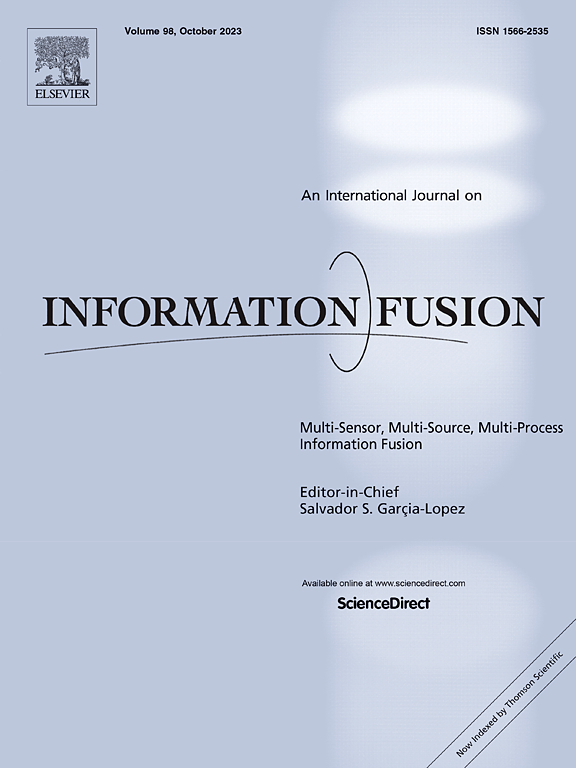Social network group decision making: Characterization, taxonomy, challenges and future directions from an AI and LLMs perspective
IF 15.5
1区 计算机科学
Q1 COMPUTER SCIENCE, ARTIFICIAL INTELLIGENCE
引用次数: 0
Abstract
In the past decade, social network group decision making (SNGDM) has experienced significant advancements. This breakthrough is largely attributed to the rise of social networks, which provides crucial data support for SNGDM. As a result, it has emerged as a rapidly developing research field within decision sciences, attracting extensive attention and research over the past ten years. SNGDM events involve complex decision making processes with multiple interconnected stakeholders, where the evaluation of alternatives is influenced by network relationships. Since this research has evolved from group decision making (GDM) scenarios, there is currently no clear definition for SNGDM problems. This article aims to address this gap by first providing a clear definition of the SNGDM framework. It describes basic procedures, advantages, and challenges, serving as a foundational portrait of the SNGDM framework. Furthermore, this article offers a macro description of the literature on SNGDM over the past decade based on bibliometric analysis. Solving SNGDM problems effectively is challenging and requires careful consideration of the impact of social networks among decision-makers and the facilitation of consensus between different participants. Therefore, we propose a classification and overview of key elements for SNGDM models based on the existing literature: trust models, internal structure, and consensus mechanism for SNGDM. This article identifies the research challenges in SNGDM and points out the future research directions from two dimensions: first, the key SNGDM methodologies and second, the opportunities from artificial intelligence technology, in particular, combining large language models and multimodal fusion technologies. This look will be analyzed from a double perspective, both from the decision problem and from the technology views.
社交网络群体决策:从人工智能和法学硕士的角度来看,特征、分类、挑战和未来方向
在过去的十年中,社会网络群体决策(social network group decision making, SNGDM)取得了显著的进步。这一突破很大程度上归功于社交网络的兴起,它为SNGDM提供了关键的数据支持。因此,它已成为决策科学中一个迅速发展的研究领域,在过去的十年中引起了广泛的关注和研究。SNGDM事件涉及多个相互关联的利益相关者的复杂决策过程,其中备选方案的评估受到网络关系的影响。由于本研究是从群体决策(GDM)场景演变而来的,因此目前对于群体决策问题还没有明确的定义。本文旨在通过首先提供SNGDM框架的清晰定义来解决这一差距。它描述了基本的过程、优点和挑战,作为SNGDM框架的基础描述。此外,本文还基于文献计量学分析对近十年来关于SNGDM的文献进行了宏观描述。有效地解决SNGDM问题具有挑战性,需要仔细考虑决策者之间社会网络的影响以及不同参与者之间达成共识的便利。因此,在现有文献的基础上,我们提出了SNGDM模型的关键要素分类和概述:信任模型、内部结构和SNGDM的共识机制。本文从两个维度确定了SNGDM的研究挑战,并指出了未来的研究方向:一是SNGDM的关键方法,二是人工智能技术,特别是结合大语言模型和多模态融合技术带来的机遇。我们将从决策问题和技术观点两方面来分析这一观点。
本文章由计算机程序翻译,如有差异,请以英文原文为准。
求助全文
约1分钟内获得全文
求助全文
来源期刊

Information Fusion
工程技术-计算机:理论方法
CiteScore
33.20
自引率
4.30%
发文量
161
审稿时长
7.9 months
期刊介绍:
Information Fusion serves as a central platform for showcasing advancements in multi-sensor, multi-source, multi-process information fusion, fostering collaboration among diverse disciplines driving its progress. It is the leading outlet for sharing research and development in this field, focusing on architectures, algorithms, and applications. Papers dealing with fundamental theoretical analyses as well as those demonstrating their application to real-world problems will be welcome.
 求助内容:
求助内容: 应助结果提醒方式:
应助结果提醒方式:


